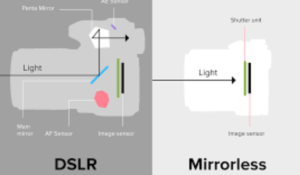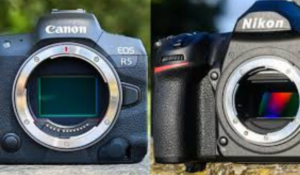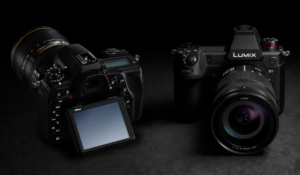What is a Mirrorless Camera?

Mirrorless cameras are a disruptive force in the world of digital photography. They have challenged the dominance and changed the way images are captured. What is a Mirrorless Camera and how does it differ from DSLRs?
Introduction to Mirrorless cameras
Mirrorless cameras are a new digital camera class that is designed to improve on DSLR cameras. DSLRs are the most popular choice of professional and amateur photographers. Mirrorless technology, with its compact design and better image quality, introduces a whole new way to photograph.
Mirrorless Technology explained

Mirrorless technology is based on the elimination of mirror mechanisms found in DSLRs. Mirrorless cameras use electronic viewfinders to display digital images instead of using mirrors to reflect light onto an optical viewfinder. This fundamental difference reduces not only the size and weight but also the noise of the camera.
Mirrorless cameras have many advantages
Mirrorless cameras have several advantages over DSLRs that make them more popular with photographers.
- Mirrorless cameras are quieter than mirror-based cameras, which makes them perfect for discreet shooting, such as at weddings and wildlife photography.
- Speed: Mirrorless cameras are faster to operate, with faster autofocus, and they can also shoot continuously. They’re perfect for fast-paced sports.
- Digital Technology: Mirrorless camera use digital technology to improve autofocus performance, and provide information about the pre-image capture. This results in more accurate and efficient photography.
- Electronic Viewfinder (EVF). EVFs provide a preview of an image in real time, so photographers can fine-tune their composition and exposure settings.
- Compact Size: Mirrorless camera are smaller and more compact than DSLRs. They can be used for everyday and travel without compromising image quality.
- Mirrorless Cameras Have a Shorter Flange: The design allows mirrorless cameras to have a shorter focal distance. This allows them to use lenses adapted from other systems, while still maintaining their compact size.
Disadvantages Mirrorless Cameras

Mirrorless cameras have many advantages, but they also come with some disadvantages.
- Native Lenses: Mirrorless cameras have a smaller selection of lenses than DSLRs. This can lead to compatibility problems and compromises in quality when using adapters.
- Battery Life: Due to the constant need for power, mirrorless cameras have a shorter battery life compared to DSLRs.
- Cost: Initial investment, plus additional costs such as battery and lens adapters make mirrorless cameras costlier than entry-level DSLRs.
- Accessory compatibility: Mirrorless cameras have a smaller range of accessories that are specifically designed for them, compared to DSLRs which are more well-established in the market.
Mirrorless Cameras: A History
Mirrorless cameras have been around since the early 2000s, when digital interchangeable lens cameras were introduced. Sony, Nikon and Canon, among others, have introduced full-frame mirrorless cameras in recent years. This has further fueled innovation and competition within the industry.
Future Outlook
Mirrorless cameras will continue to dominate the market in the future, thanks to the ongoing advancements in technology and the commitment by major camera manufacturers, who are committed towards pushing the limits of innovation. Mirrorless technology will continue to improve in terms of image quality, performance and versatility. This will make it the choice of photographers at all levels.
Mirrorless cameras are a major advancement in digital photography. They offer a combination of compact design and superior image quality with advanced features. They may not be as good as DSLRs but the benefits they provide make them an investment worth making for photographers who want to embrace the future. There’s a camera for everyone, whether you’re an enthusiast beginner or a professional.



